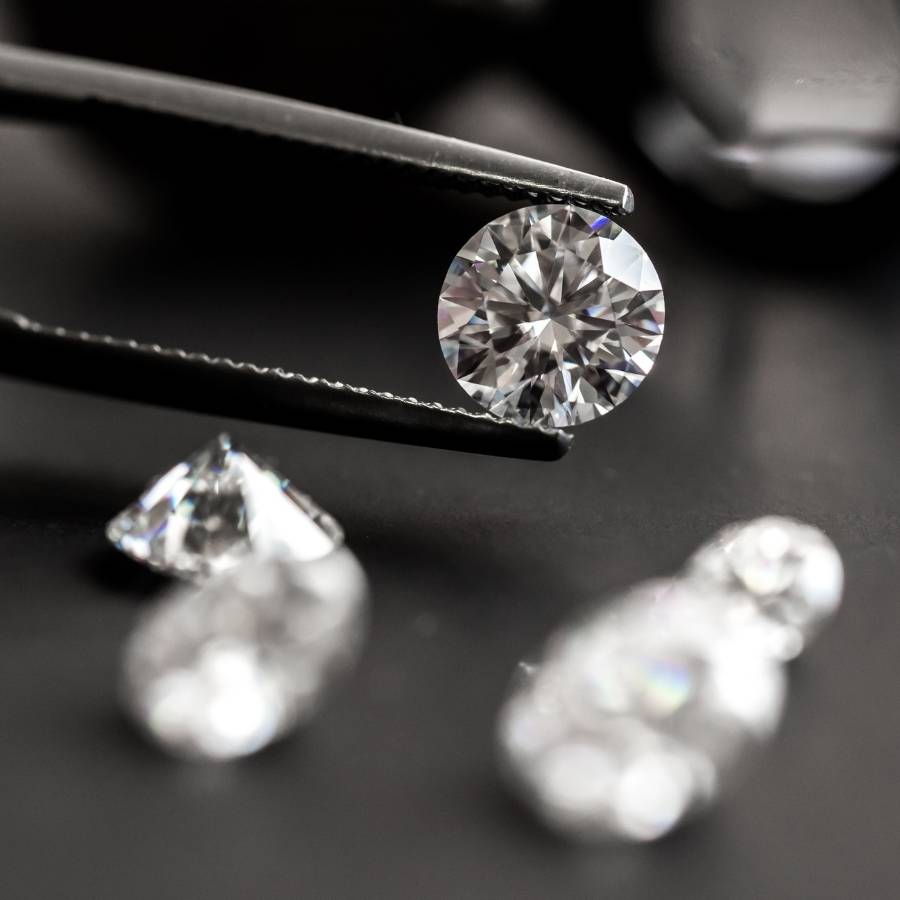
Last Updated on 14/03/2022 by Wit Sudjaiampun
Last Updated on 23/05/2023 by Above Diamond

How are CVD and HPHT Diamonds different from Natural Diamonds? Let’s compare their advantages and disadvantages to address all the questions in this blog post.
In recent years, there has been a wide variety of alternative diamond options entering the jewelry market. Buyers now have more choices when it comes to purchasing diamond engagement rings and wedding rings. One of these options is lab-grown diamonds (CVD/HPHT Diamonds).
These lab-grown diamonds have gained increasing popularity in certain countries, particularly in the United States. This is due to their similarity to natural diamonds, as it is difficult for the average person to visually distinguish them without specialized tools for testing.
Additionally, lab-grown diamonds are priced lower than natural diamonds price, often around 60-70% less. If you’re wondering what’s the price of a 1 carat lab grown diamond? Then you can simply check the price of a 1 carat natural diamond and do the math. This affordability has led many individuals with budget constraints to choose lab-grown diamonds, as they can obtain larger carat sizes, often 2-3 times larger than it’s counterpart within the same budget.
While lab-grown diamonds are just gaining recognition in Thailand, this article by Above Diamond, which exclusively sells natural diamonds, intends to gather information about lab- grown diamonds. Thanks to Khun May, Maye Diamond (a Lab-Grown Diamond Specialist), the information about lab-grown diamonds is sourced from her. We aim to provide a balanced comparison of the advantages and disadvantages for individuals interested in purchasing jewelry, as well as diamond investors, with better knowledge to make informed decisions.
Before comparing the advantages and disadvantages of each type, it is necessary to explain the origins of both CVD/HPHT diamonds and natural diamonds to address the common questions. What criteria are used to determine if a diamond is genuine? And are lab-grown diamonds considered genuine diamonds?

To avoid confusion, let’s categorize diamonds into three main types as follows:
Natural diamonds are formed deep beneath the Earth’s surface over millions of years. Under extremely high temperatures and pressures, typically at depths of approximately 150-200 kilometers below the Earth’s surface, carbon atoms crystallize to form diamonds. These conditions exist within the Earth’s mantle, where temperatures average around 900-1,300°C and pressures range from 45-60 kilobars (roughly 50,000 times atmospheric pressure at the Earth’s surface).
Under such environmental conditions, the carbon atoms undergo a process of crystallization and transform into diamonds. The resulting diamonds exhibit an octahedral shape, are transparent, and can come in various colors or even colorless. Diamonds are considered the hardest gemstone. They are brought to the Earth’s surface through volcanic activity, carried upward through the eruption of magma and eventually reaching the Earth’s surface.
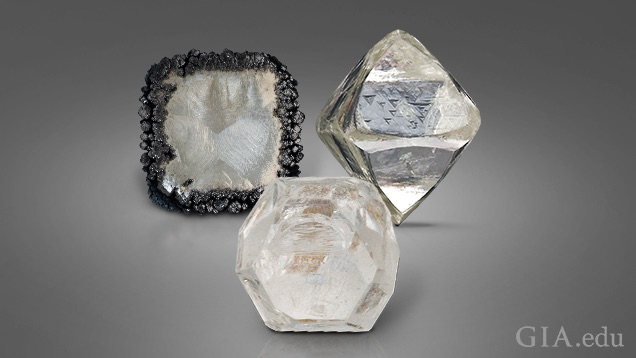
Synthetic diamonds, CZ diamonds (Cubic Zirconia), commonly known as Russian diamonds or Swiss diamonds, were originally created as alternatives to natural diamonds. They are often used in silver jewelry or fashion accessories due to their affordable price. These synthetic diamonds are primarily used in budget-conscious jewelry, ranging from a hundred to a few thousand-baht priced pieces. They possess visual properties that closely resemble natural diamonds, making them easily accessible to buyers.
In the early days, CZ diamonds were widely sold to unsuspecting buyers at high prices, misleading them to believe that they were genuine diamonds. A large number of buyers were deceived, but over time, more people became knowledgeable about the differences. CZ diamonds can be easily distinguished from genuine diamonds by experts and even with the naked eye.
Afterward, there were continuous developments to make synthetic diamonds resemble natural diamonds even more. This led to the creation of Moissanite, also known as “Moissanite Diamond,” which is derived from silicon carbide, the rare mineral. It was first discovered in the Canyon Diablo meteorite crater. These diamonds generally have a higher level of beauty compared to CZ diamonds. They exhibit more play of light and have a more exquisite cut. However, they can still be distinguished with relative ease.
In summary, both synthetic diamonds (such as Moissanite) and lab-grown diamonds are created in laboratories, but they possess different characteristics. These differences include variations in internal elemental composition and the quality of play of light. For example, Moissanite does not exhibit the same level of brilliance as natural diamonds and lab-grown diamonds. Furthermore, it is possible to visually distinguish synthetic diamonds with the naked eye.
Lab-grown diamonds are an advancement in innovation. They are created through a controlled process of diamond crystallization in a laboratory setting, mimicking the conditions similar to the formation of natural diamonds. Lab-grown diamonds can be produced through two main methods, which are as follows:
HPHT is one of the earliest methods used for producing lab-grown diamonds, starting from the 1950s. Apart from diamond production, the HPHT process can also be used to enhance the clarity and color of natural diamonds, giving them a higher water-like clarity or introducing various colors such as pink, green, blue, or yellow.น
The HPHT method involves placing small-sized diamond seeds into carbon, which is an essential component in diamond growth. The diamond seeds are exposed to high heat and high pressure, simulating the natural diamond growth process beneath the Earth’s surface. When exposed to temperatures as high as 1,500°C and extreme pressure, the carbon dissolves and crystallizes around the diamond seeds. As the diamond cools down, it transforms into a pure carbon diamond in a cuboctahedron.
CVD diamonds were invented in a laboratory in the 1980s, making them a more recent advancement compared to HPHT because they require lower pressure and smaller equipment for production. This results in significantly reduced production costs.
The process of creating CVD diamonds involves placing diamond seeds in a closed chamber with high temperatures of up to 800°C. A gas containing carbon is introduced into the chamber until it breaks down into ions. This causes pure carbon atoms to adhere and gradually crystallize around the diamond seeds, forming diamonds in a cubic.
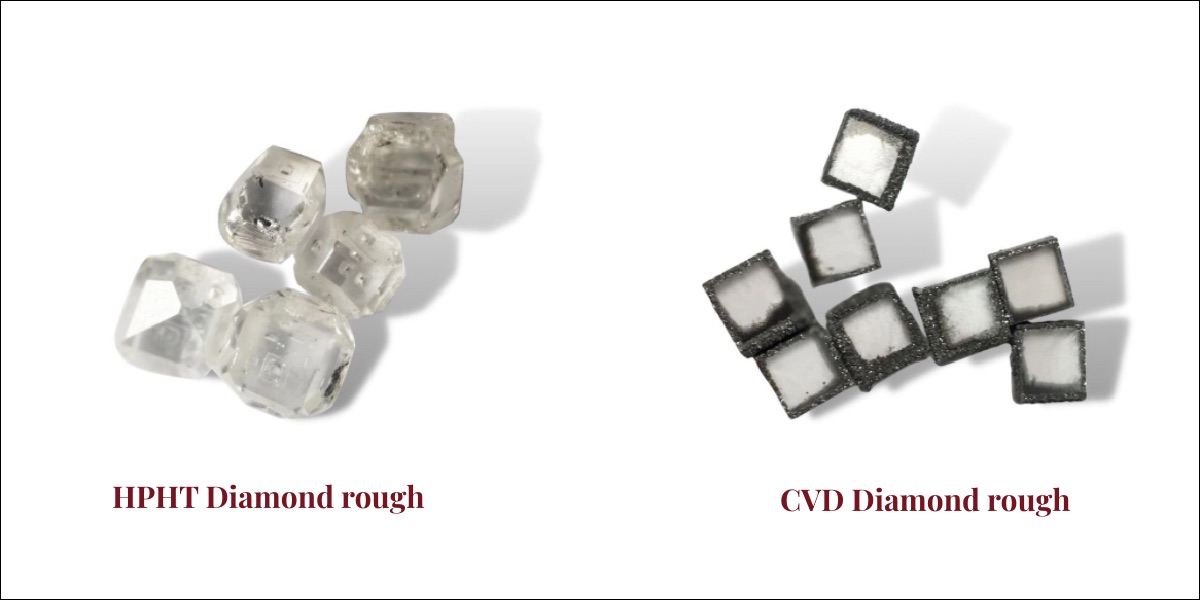
When comparing CVD diamonds to HPHT diamonds, there are almost no discernible differences, apart from the variations in the lab-grown diamond production processes. Once the diamonds have been faceted, it is nearly impossible to distinguish between HPHT and CVD diamonds. This is because both methods can produce high-quality diamonds, such as those with a D Color to F Color and high Clarity levels (VS2 to VVS1 Clarity), without much difficulty.
The deeper we delve into the internal structure, the more complex it becomes, and it may indeed become a headache. In reality, sometimes CVD diamonds can be subjected to HPHT treatments to enhance their color or even their clarity, resulting in an even more beautiful diamond. This means that a single lab-grown diamond can exhibit characteristics of both CVD and HPHT methods.
In the case of natural diamonds that have undergone HPHT treatment, it will be specified in the certificate or comments that HPHT treatment has been performed. Therefore, if you intend to purchase a natural diamond, you can rest assured in this regard.
Comparison Table: Natural Diamonds vs Lab-Grown Diamonds
| Natural Diamonds | Lab-Grown Diamonds | |
|---|---|---|
| Chemical Composition | Carbon | Carbon |
| Diamond Tester | Pass | Pass |
| Mohs Scale | 10/10 | 10/10 |
| Origin | Beneath the Earth's surface | In a laboratory |
| Time to Form | Millions of years | A few weeks |
| Price | ฿฿฿฿฿ Diamonds Prices Today | ฿฿ 60-70% from natural diamonds |
| Ethical Standards | Depends on each mine* | Yes |
*Note: Above Diamond collaborates exclusively with mines that have been certified for ethical practices in accordance with international ethical standards.
Therefore, it can be concluded that Lab-grown diamonds, whether created through HPHT or CVD methods, possess physical properties and chemical compositions similar to natural diamonds. In some cases, they may be considered as genuine diamonds. The only difference is that Lab-grown diamonds are created by humans in controlled laboratory environments, whereas natural diamonds are formed beneath the Earth’s surface.
Or to provide a simple analogy, natural diamonds are like trees that grow naturally over time, while Lab-grown diamonds are like plants that are cultivated in a laboratory by providing them with chemical fertilizers and controlling sunlight and air to facilitate rapid growth. Both are trees, but they differ fundamentally in terms of origin and timeframe.
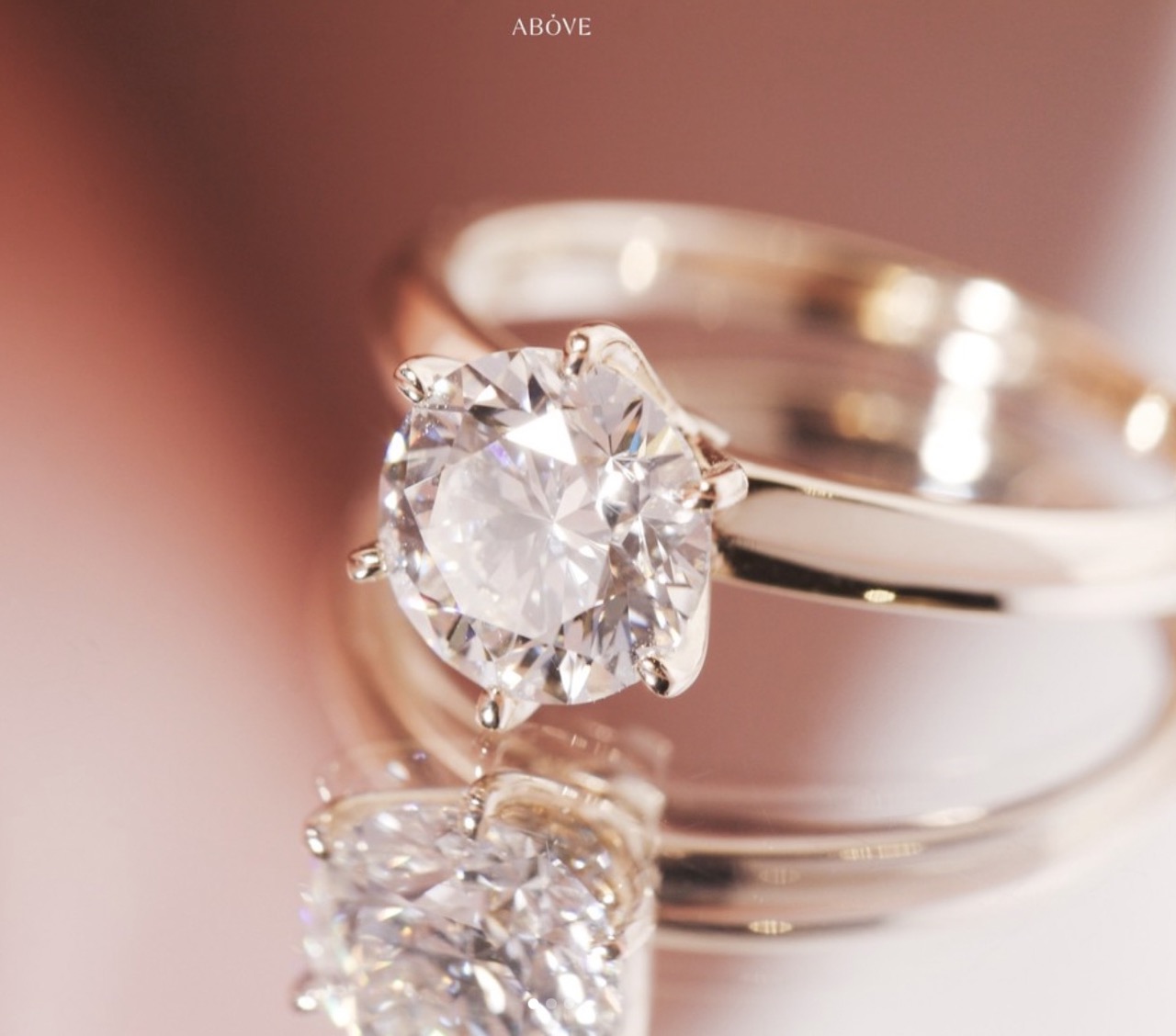
Pros of Natural Diamonds
Cons of Natural Diamonds
When you have the intention to invest in buying natural diamonds, it is necessary to trust and choose reputable stores. In recent times, there have been numerous reports of some sellers selling lab-grown diamonds at inexpensive prices while claiming them to be natural diamonds. These lab-grown diamonds cannot be distinguished with the naked eye. Therefore, it is recommended that you purchase diamonds with a certificate, as the certificate indicates the origin and authenticity of the diamond, ensuring that it is truly a natural diamond as you desire.
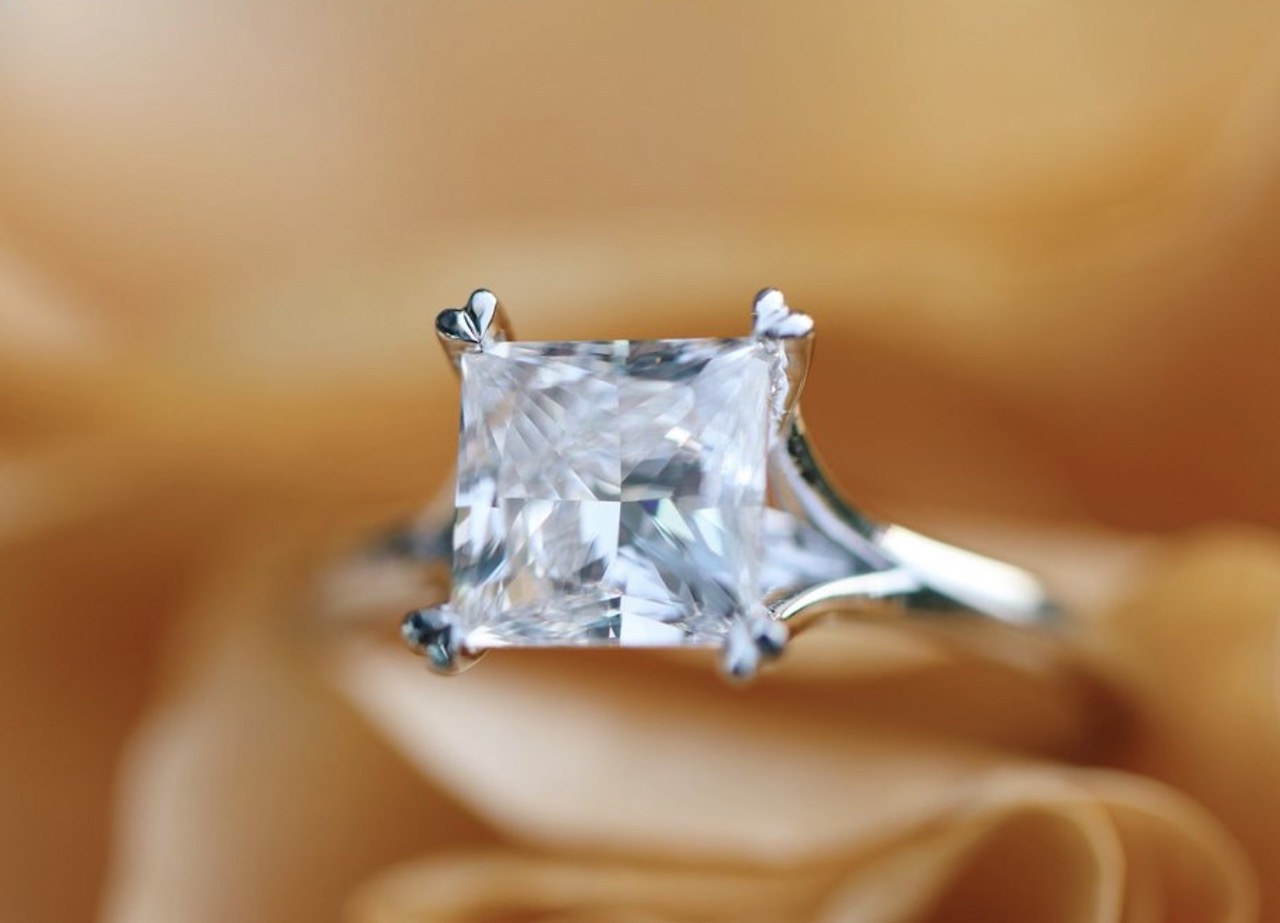
Pros of Lab-Grown Diamonds
Cons of Lab-Grown Diamonds
Due to the continuous production of lab-grown diamonds without limitations and the increasing number of new labs entering the market, the prices can change relatively quickly. Therefore, it may not be suitable for long-term investment purposes.
Natural diamonds are harder and more durable than other types of gemstones, scoring a perfect 10 on the Mohs Scale of Hardness, just like lab-grown diamonds. Therefore, both natural diamonds and lab-grown diamonds are considered the most durable gemstones that can be worn daily because they are difficult to scratch.
Determining whether a diamond is natural or lab-grown is not possible with the naked eye alone. Even experts in the field of gemology may not be able to tell the difference. To determine the origin of a diamond, the use of certification documents or specialized diamond testing equipment, may be necessary.
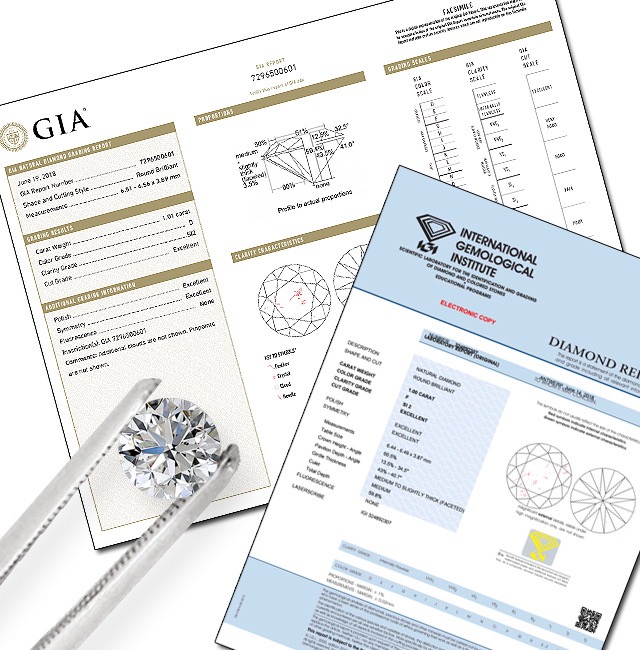
Finally, Above Diamond reiterates the stance that we exclusively choose to use only natural diamonds and emphasize diamonds that are certified by the renowned institution GIA, as it is the number one ranked gemological institute. Additionally, we have knowledgeable gemologists who genuinely provide advice to ensure that you invest in high-quality natural diamonds and receive accurate and clear information.
<pIn summary, natural diamonds and lab-grown diamonds differ in their origin and the process of formation. Although they may have similar visible characteristics, external appearance, and internal chemical properties, whether you choose natural diamonds or lab-grown diamonds depends on personal preferences and budget. There is no right or wrong choice.
However, if you are interested in ordering custom jewelry, such as lab-grown diamond rings, we recommend contacting Maye Diamond (Lab-Grown Diamond Specialist) directly. They are experts and importers of lab-grown diamonds certified by IGI, ensuring that the lab-grown diamonds you receive are ethically sourced and produced without any illegal labor practices. This applies to natural diamonds from Above Diamond as well.

Get in touch with one of our diamond specialists.
This website use cookies to enhance your experience and providing the best service from us. You can learn more about our use of cookies in Privacy Policy